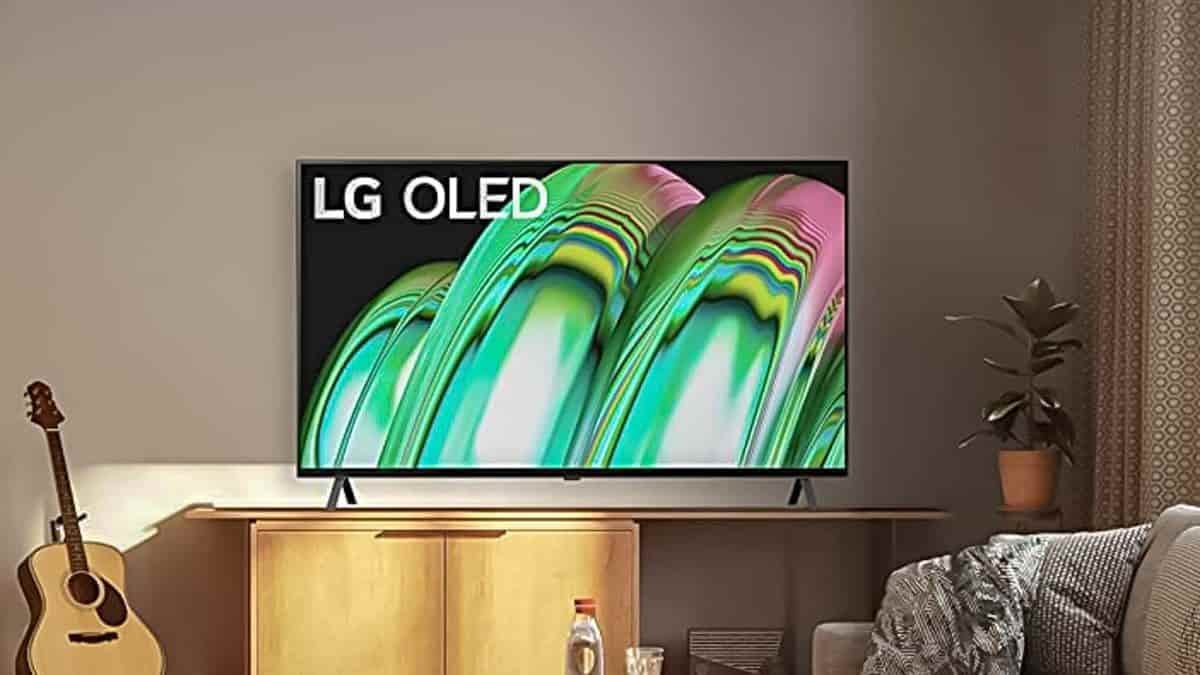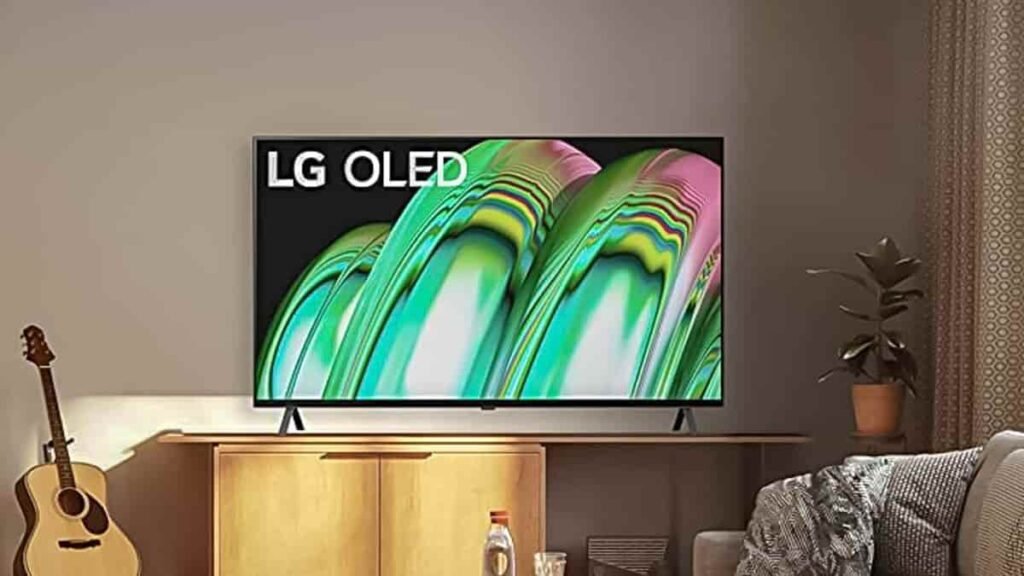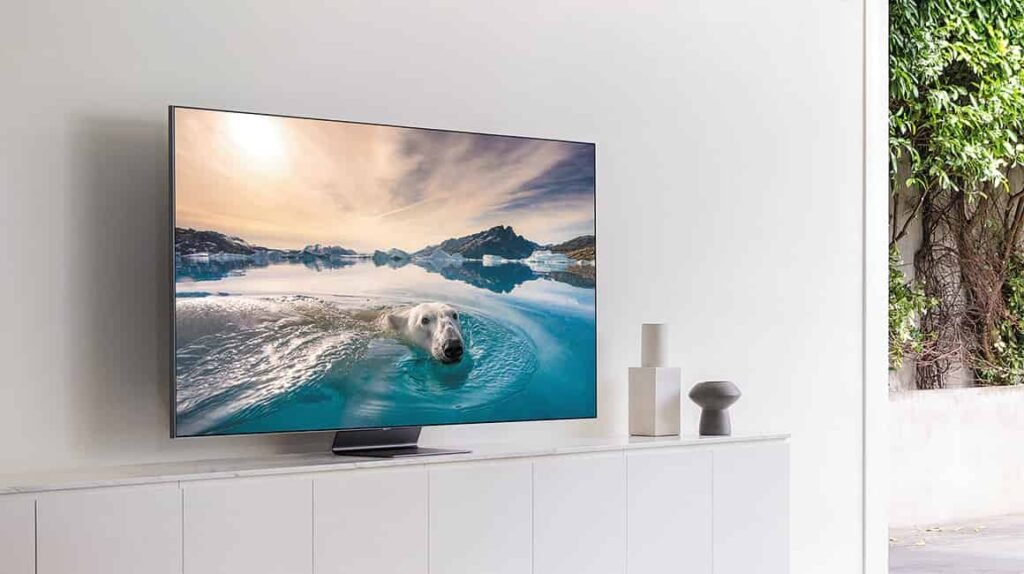Physical Address
304 North Cardinal St.
Dorchester Center, MA 02124
Physical Address
304 North Cardinal St.
Dorchester Center, MA 02124

Between OLED and QLED, which is the right type of TV for you? Well, OLED vs QLED remain the two biggest acronyms in TV panel tech. Only one letter appears to be the difference between the two, but there are differences between them.
While OLED is an acronym for Organic Light Emitting Diode, QLED is an acronym for Quantum Dot Light Emitting Diode. These two types of TVs are known to display an image on the screen differently.
These are the best TVs on the market, and choosing the right type depends on your budget and other factors.
We will be looking at the differences between these two types of TVs and which is the right TV for you.
OLED is an acronym for Organic Light Emitting Diode- OLED TVs have pixels that function independently from one another and individually light up based on when they are required to be used.
The pixels in an OLED panel have thin layers of organic material inside. They light up when electricity is applied. The pixels consists of multiple colour filter such as red, blue, or green.
These pixels allow OLEDs to display real and exciting colours.
OLED TVs do not have a backlight, so the sets are the thinnest. OLED TVs support HDR and the motion on screen is smooth because the pixels can be turned on and off individually.
LG was the only manufacturer of OLED panels, but today, you can find OLED TVs made by Samsung, Vizio, and Sony.

Also Read: Tablet vs iPad: Difference and Comparison
QLED stands for Quantum Dot Light Emitting Diode- QLEDs are a type of liquid crystal display (LCD) with an additional layer that improves the colour of the screen.
QLEDs use quantum dots to create a broad colour spectrum, which is similar to the colour and brightness experienced in real life. These type of TVs are illuminated by liquid crystal display (LCD) backlights and it offers 100% colour volume.
The quantum dot layer in QLEDs is between the backlights and the pixels. The dots in QLED TVs are different in size and each size corresponds to a colour to display stunning images.
The first company to produce QLED TVs was Samsung. Today, you will find QLED TVs made by companies such as Hisense, LG, Sony, TCL, etc.
QLEDs have the highest peak brightness which allows them to display the most accurate HDR images.

OLED and QLED TVs offer a stunning experience in general. They are available on the market and purchasing these TVs depends on personal preference, durability, price, and high-quality image.
QLED TVs are highly regarded on paper to offer a higher brightness, durability, no risk of burn-in, and affordability.
Now, if you are looking for a product with a better viewing angle, OLED TVs are the best option. OLEDs use less power, perfect for gaming, and have deeper black levels.
Additionally, OLED technology is a better option when you can control your room’s lighting.
Also Read: LP vs EP: Difference and Comparison
OLED and QLED TVs cost more than the normal TVs on the market, so one has to consider their best option when purchasing a TV.
Generally, it’s usual to consider the TV’s brightness, contrast, viewing angles and other features of the TV.
You intend to spend big to get a new TV, it’s worth considering the important factors making the purchase.
Purchasing a TV that is pretty expensive comes with expectations.
When it comes to black levels, the best option in the market is OLEDs. OLEDs are better than QLEDs because of their ability to completely go black when it needs to.
When it comes to high-quality images, QLED TVs are preferred over OLED TVs.
TCL and Samsung are two companies that have multiple QLED series. The most expensive ones, as you would expect perform a lot better than cheaper ones.
In contrast, every OLED TV appears to have a similar image quality. If you prefer OLED TVs, there are some variations among different OLED TVs.
OLED TVs received the best review in picture quality.
Which is the right TV for you if you want a wide viewing experience?
Regardless of where you choose to sit, an OLED TV screen offers a wide viewing experience that allows you to see what is happening. An OLED TV such as the Samsung S95B offers a wide viewing angle.
The Samsung S95B comes with a unique feature for that special experience.
The Samsung OLED system has over 8 million self-illuminating pixels- pixels that are able to dim or switch off completely and it creates deep colours with cinematic contrast.
A unique feature of the Samsung S95B is an AI-powered processor that offers better scenes, pixels by pixels.
If you are a gamer or want to game, OLED TVs are the best option. The LG C2 65-inch OLED TV and other OLED TVs similar to it are multifunctional and you can rely on them to help you with your gaming needs. The LG C2 comes with a gamer optimizer mode with Nvidia G-Sync.
With it, you will enjoy a high refresh rate FreeSync Premium and Variable Refresh Rate (VRR). It comes with four HDMI 2.1 ports which support Nvidia G-Sync and AMD FreeSync Premium VRR, an Ethernet port, and three USB ports.
Also Read: Ubersuggest vs SEMrush vs Ahrefs: Difference and Comparison
Most OLEDs are better than QLEDs in terms of picture quality.
QLEDs are budget-friendly compared to OLEDs. They usually produce a much brighter picture than OLEDs, which is an advantage if you often watch TV in a sunny room.
OLEDs have solved the problem of too much brightness in recent years. So, if you are looking for a TV with a bright picture, QLED TVs are your best option.
OLED and QLED TVs are quite expensive than usual TVs on the market.
QLEDs are available in the market and the price for a 65-inch model is $1,000. If you want to get an OLED TV, expect to pay around $2,000.
According to LG, their OLED TVs would have to be watched for five hours each day for fifty-four years before they fell to 50% brightness. However, since OLED TVs were released just over a decade ago, we cannot attest to that as a fact.
Also Read: Server vs Host: Difference and Comparison
| OLED TV sizes | QLED TV sizes |
| 42 inch | 32 inch |
| 48 inch | 43 inch |
| 55 inch | 50 inch |
| 65 inch | 55 inch |
| 77 inch | 58 inch |
| 83 inch | 65 inch |
| 88 inch | 75 inch |
| 97 inch | 82, 85, 98 inch |
OLED and QLED TVs offer a stunning experience in general. They are available on the market and purchasing these TVs depends on personal preference, durability, price, as well as a high-quality image.
OLED and QLED TVs are produced by many electronic companies. If you are looking for the best picture quality, your best option is an OLED TV. However, if you are looking for an affordable product, get a QLED.